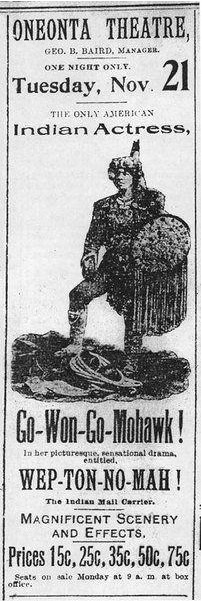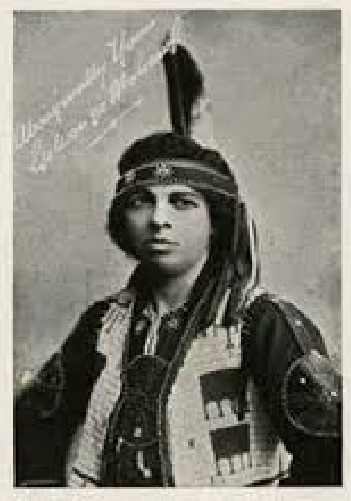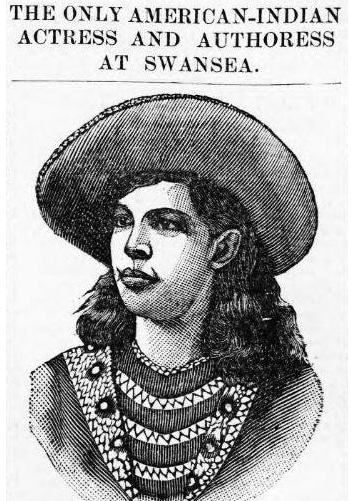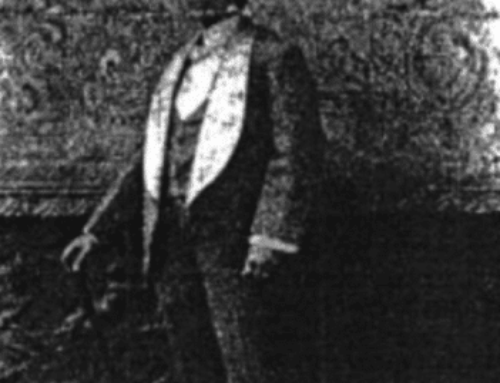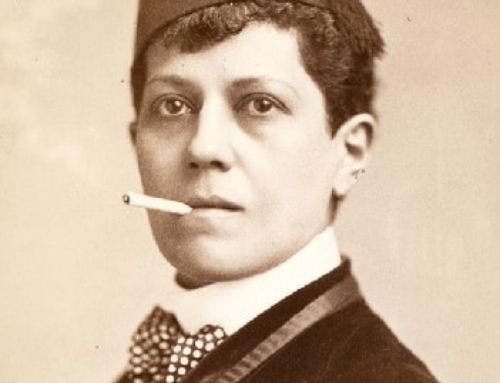
Years active
1889 – 1910
Stage Name(s)
Gowongo Mohawk, Go-Won-Go
Category
Male Impersonator
Country of Origin
USA
Birth – Death
1860 – 1924
Bio
Gowongo Mohawk (August 11, 1860 – February 7, 1924) was one of the first American Indian actors to perform on the American stage and the first known American Indian male impersonator. She wrote, directed and starred in several productions that she toured throughout the United States and Europe. Through her stage career she became an advocate and activist for Native American rights.
Gowongo was born on August 11, 1860 on a Seneca Indian reservation in Gowanda, Cattaraugus County, New York to Chief and medicine man Dr. Alan (Ga-Na-gua) Mohawk and Lydia Hale. Her English-speaking name was Caroline A. Mohawk (Carrie) and she later chose to use her Indian name, Gowongo Mohawk, as her stage name.(1) She was an only child and her father died when she was nine years old. Her mother Lydia moved them to Ohio and in 1873 was remarried to Robert Killey. Lydia bore her second child, William Henry, yet died two years later when Carrie was fourteen. There is little else known about Carrie’s early life in New York and Ohio.(2) Some biographical details have been culled from the interviews in newspaper articles during her theatrical career though some could be fabrications used as publicity stunts. A few articles do mention that she attended an all girl school which could have piqued her interest in acting. ‘Many articles portrayed her as having enjoyed a childhood of riding horses, running, hunting, fishing, and rowing, all of which gave her the foundation for her physical strength and the ability to play male roles.’(3)
In 1879, at the age of eighteen Carrie married Civil War Veteran James E. Rider who was thirty-one. According to an interview in 1885, Carrie began her acting career in 1883. Her sister in law was notable actress Louise Pomeroy, and the person who first cast her in a small role in the play “The Outcast” which started her acting career. Many accounts say that Gowongo Mohawk got her start in show business by participating in Buffalo Bill’s Wild West Show yet there is no verifiable evidence to attest to this assertion. It is probable that she did see his show when it went through Ohio in 1880 and subsequently in 1883.
For the next six years, she played various female characters in many theatrical productions in notable cities such as New York and Philadelphia among others. During the production of “Michael Strogoff” in Philadelphia, she met her second husband, Charles W. Charles, who was also in the play. They married in 1889 yet both of them were not divorced from their first marriages. This caused quite a stir in 1892 when her first husband, James Rider, confronted the couple in Hoboken, NJ where they were scheduled to perform. Different sources claim different stories but suffice it to say, they were both attacked and Carrie missed at least a week of performance as a result.(4)
(Submitted by: Mo B. Dick, Los Angeles, CA)




